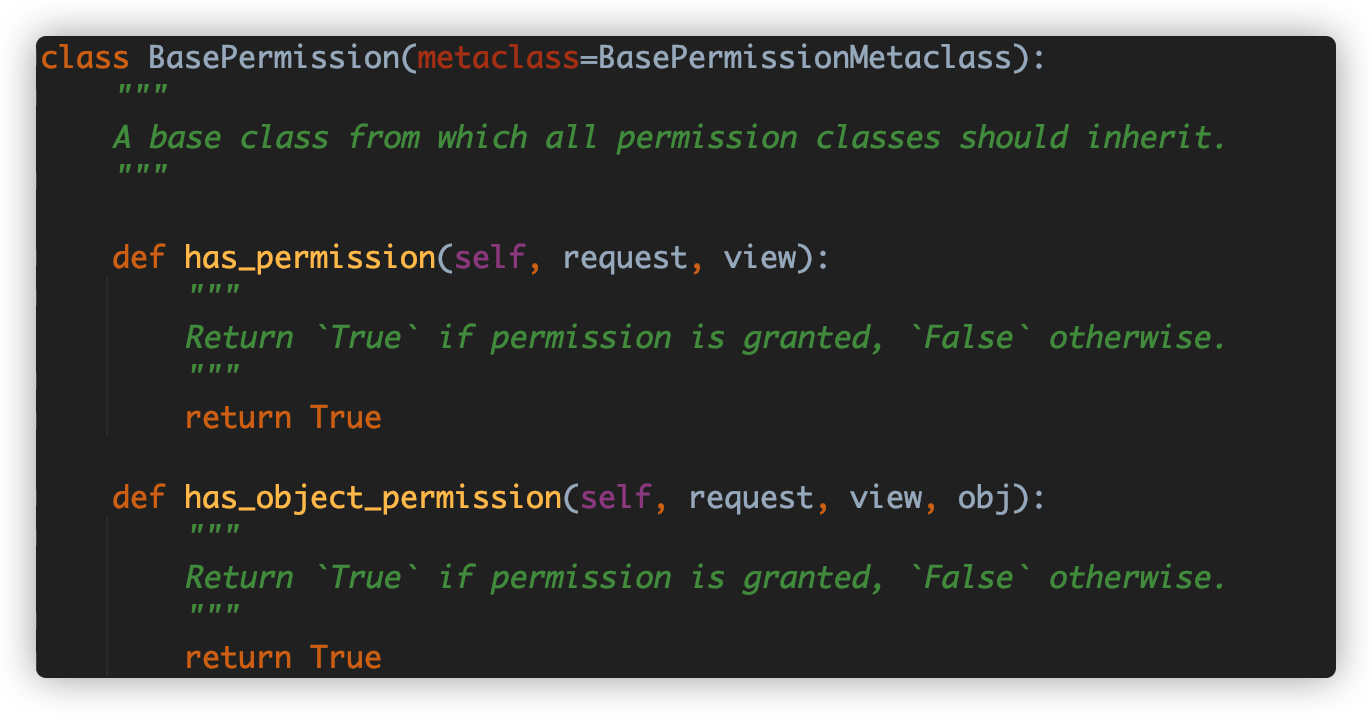class SVIPPermission(BasePermission): # 推荐继承BasePermission类
# message = 'You do not have permission to perform this action.'#默认值
message = '无此权限!!!'
def has_permission(self, request, view):
if request.user.user_type == 3:
return False # False为没权限
# view.queryset = # 可以使用这种方式控制视图中要处理的数据(根据不同权限)
return True # True为有权限
源码分析
进入dispatch函数,查看initial方法(执行三大验证)中的check_permissions方法:
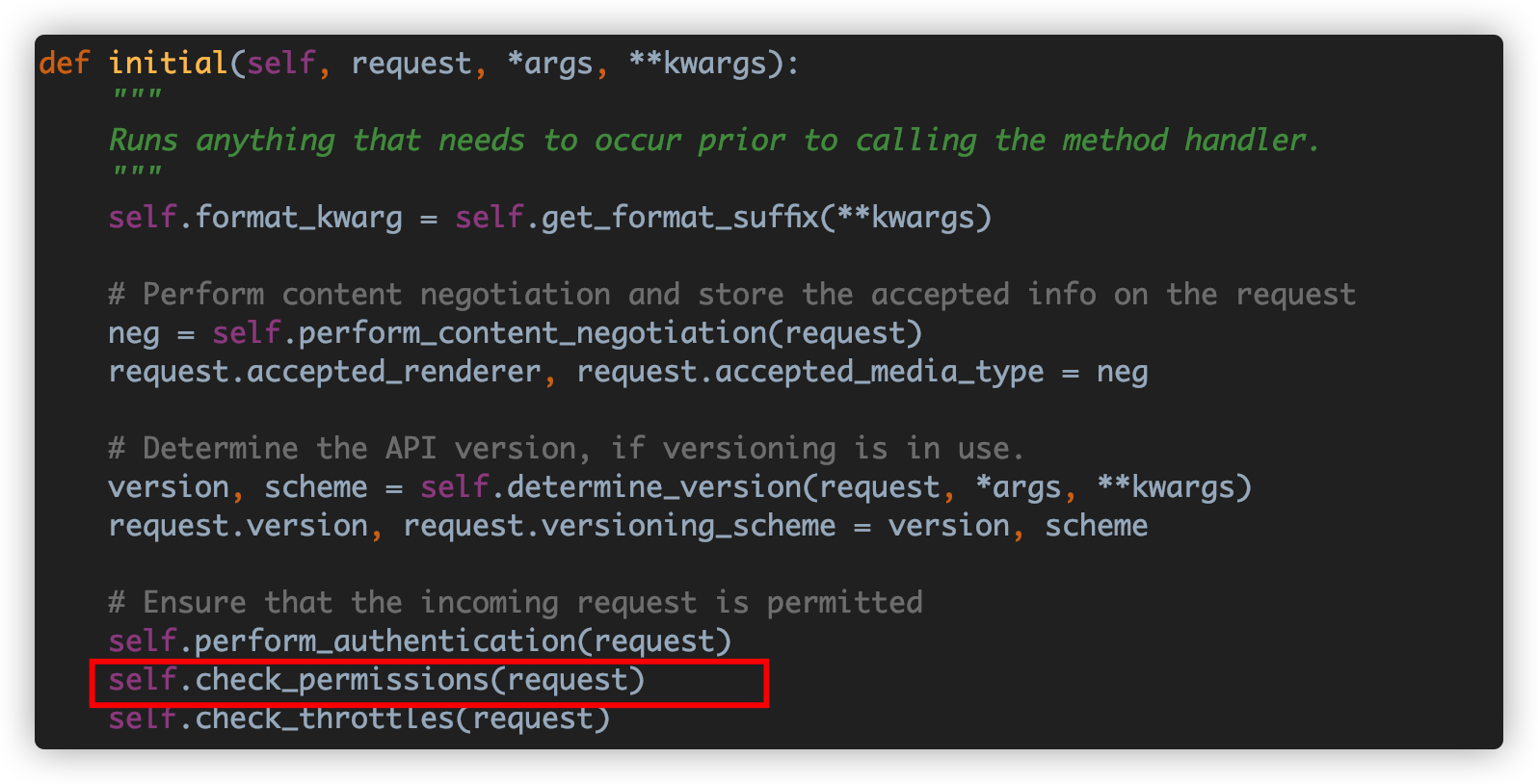
self.check_permissions(request)将会根据request中的用户内容进行权限控制。


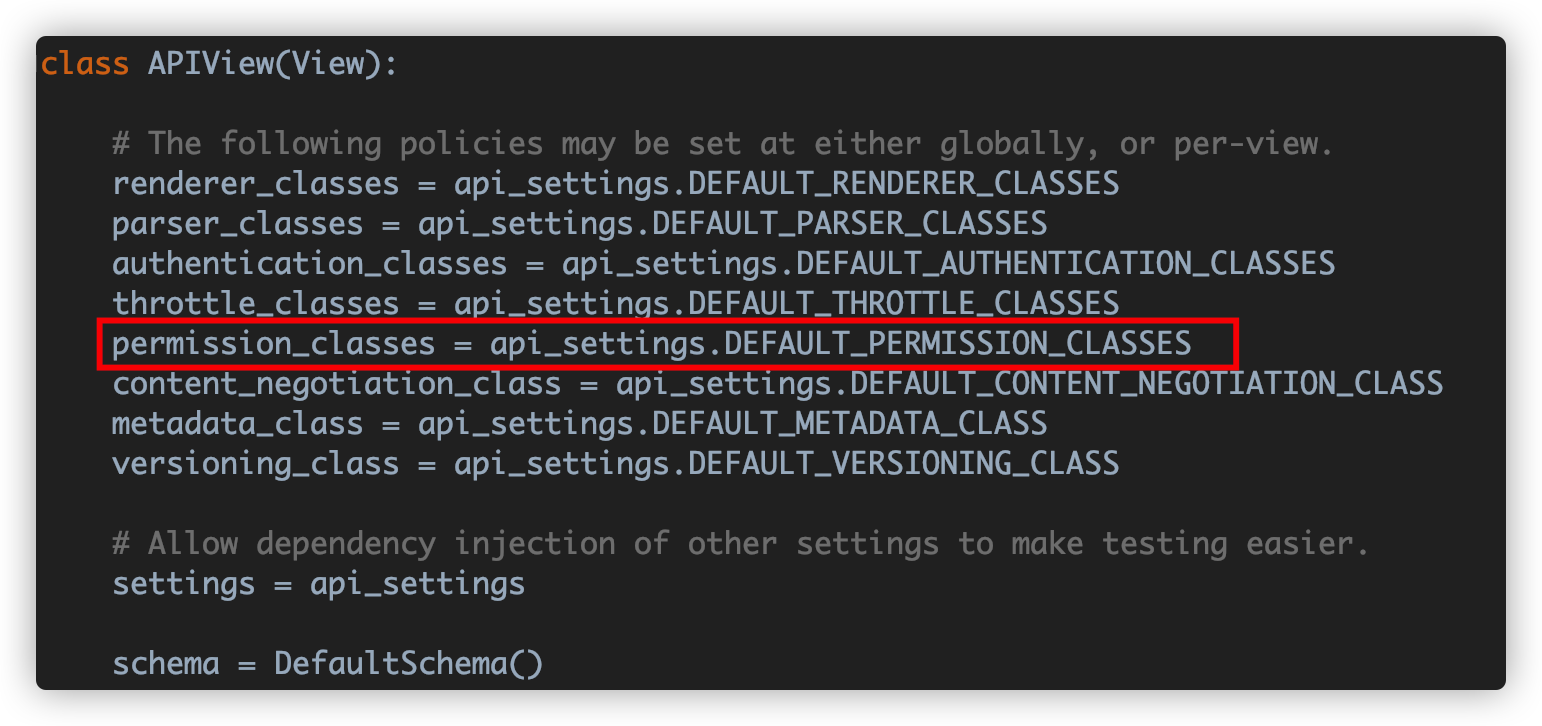
由上可知,permission_classes要么读取配置文件中的DEFAULT_PERMISSION_CLASSES(全局),要么就在视图类中直接对permission_classes赋值(局部)。
节流限制
前言
控制网站访问频率。
使用流程
- 自定义限制类,继承
BaseThrottle。
- 指定从配置文件中要读取的scope(key),形式为
scope="key"
全局配置:
REST_FRAMEWORK = {
'DEFAULT_THROTTLE_CLASSES': [
'rest_framework.throttling.AnonRateThrottle',
'rest_framework.throttling.UserRateThrottle'
],
'DEFAULT_THROTTLE_RATES': {
'anon': '100/day',
'user': '1000/day'
}
}
局部配置:
throttle_classes = [UserRateThrottle]
就比如UserRateThrottle,继承了SimpleRateThrottle,指定了它所限制的scope,重写了get_cache_key方法。
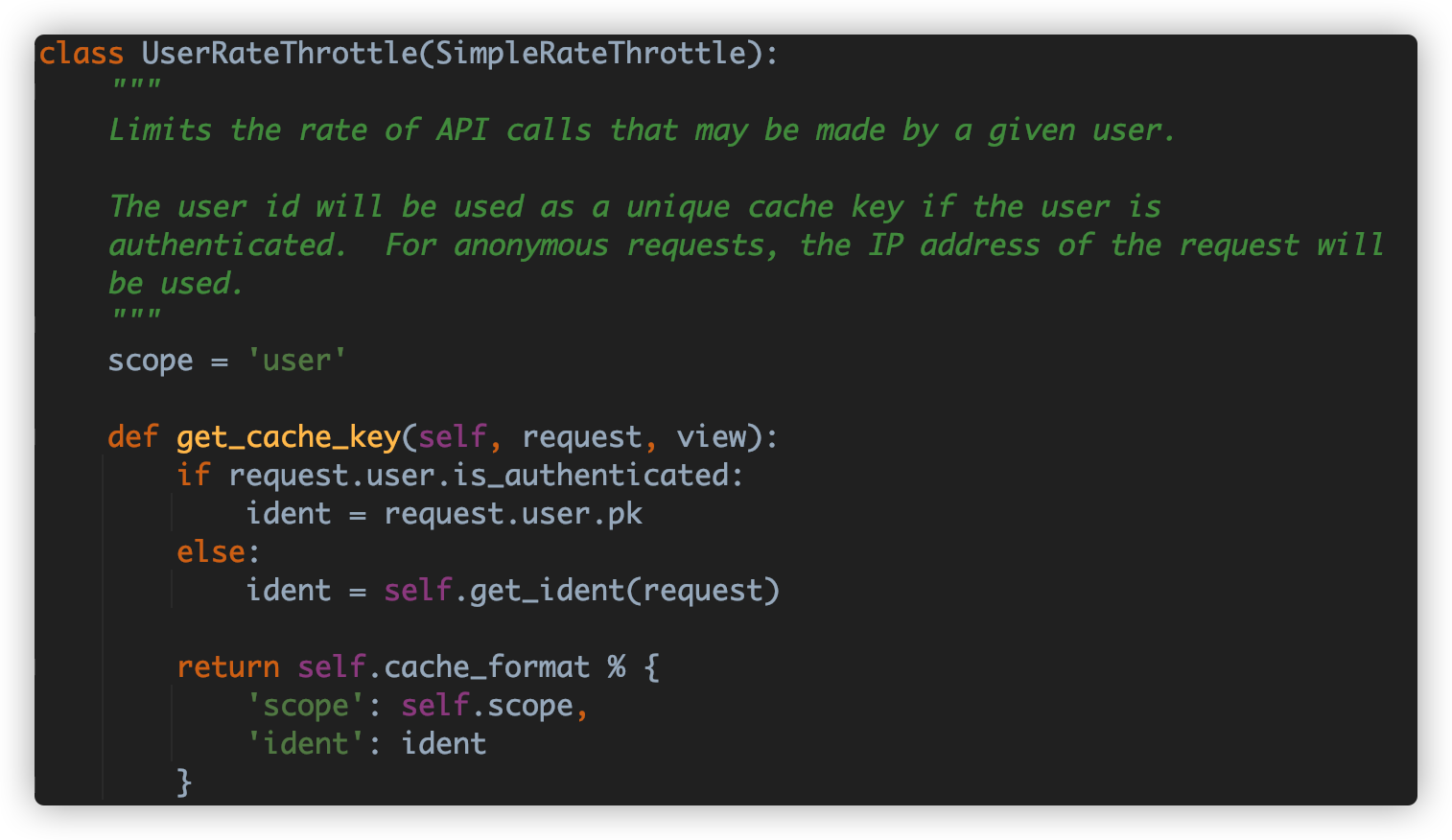
源码分析
在APIView的initial方法中,三大验证还剩下最后一个没有分析,那就是访问频率验证,如下图:
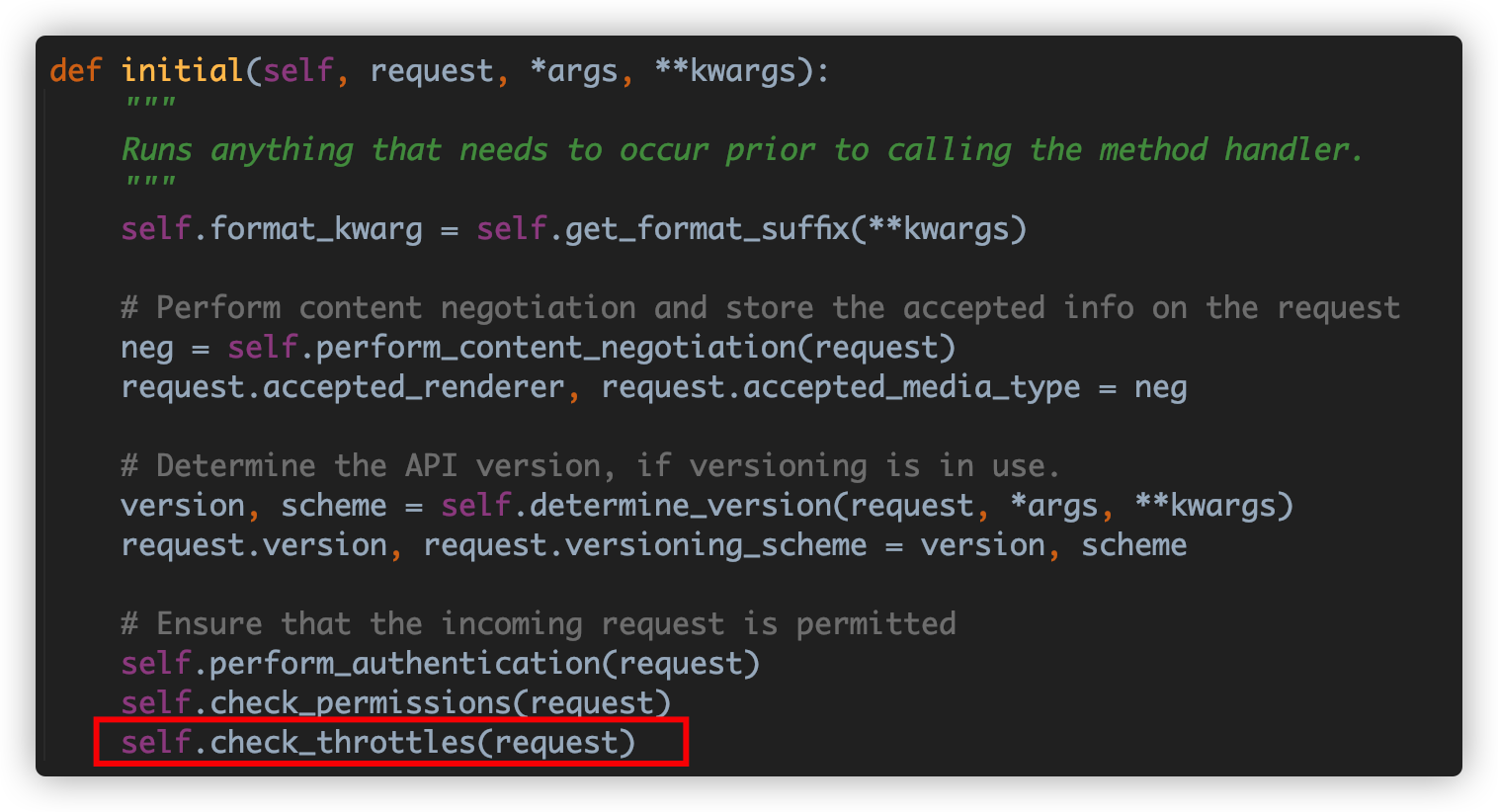
接下来让我们查看check_throttles,可以看到,验证访问频率的时候,调用的方法为频率验证类的allow_request方法。
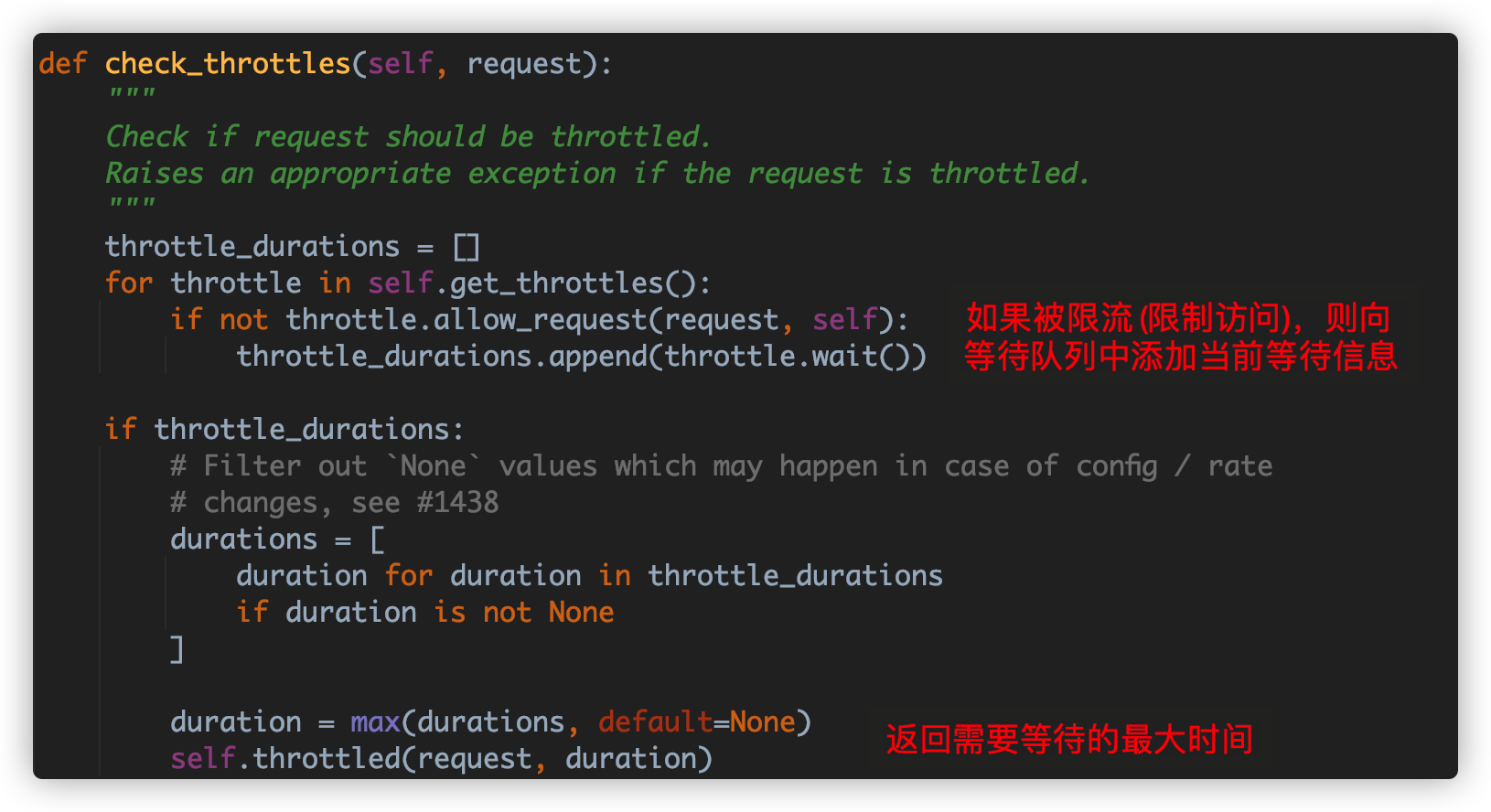
其中get_throttles用的还是老套路:

示例
自定义一个频率限制类:
from rest_framework.throttling import BaseThrottle
import time
# 存放访问记录(一般放数据库或者缓存中)
VISIT_RECORD = {}
class VisitThrottle(BaseThrottle):
def __init__(self):
self.history = None
def allow_request(self, request, view):
# 1. 获取用户ip
remote_addr = request.META.get("REMOTE_ADDR")
# 2. 添加到访问记录中
ctime = time.time()
# 当VISIT_RECORD中没有这个记录,可以直接访问,添加一个记录
if remote_addr not in VISIT_RECORD:
VISIT_RECORD[remote_addr] = [ctime, ]
return True
history = VISIT_RECORD.get(remote_addr)
self.history = history
# 拿到最后历史记录里面的最后一个时间,如果最后一个时间小于当前时间-60(一分钟之前的记录)
while history and history[-1] < ctime - 60:
history.pop()
if len(history) < 3: # 允许
history.insert(0, ctime)
return True
return False # False表示访问频率太高被限制
def wait(self):
"""
还需要等多少秒可以访问
:return:
"""
ctime = time.time()
return 60 - (ctime - self.history[-1])
注意:官方内置的 SimpleRateThrottle 类中对scope的处理值得一看。

